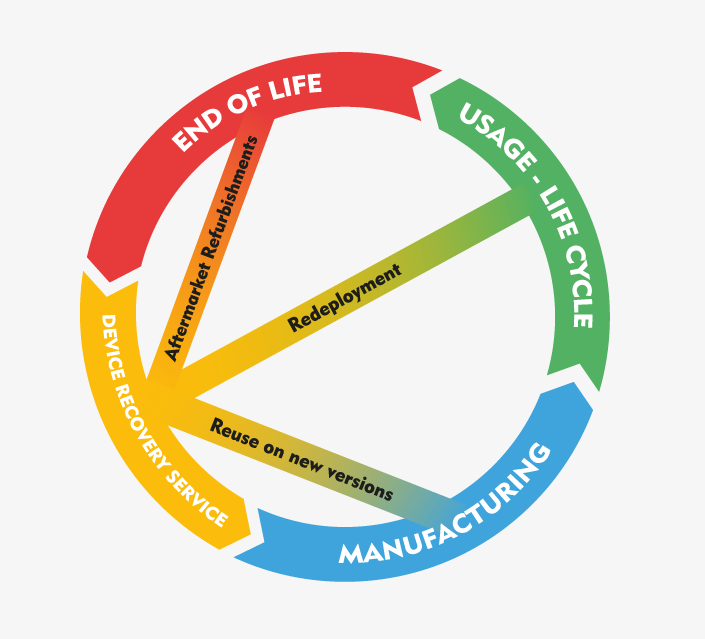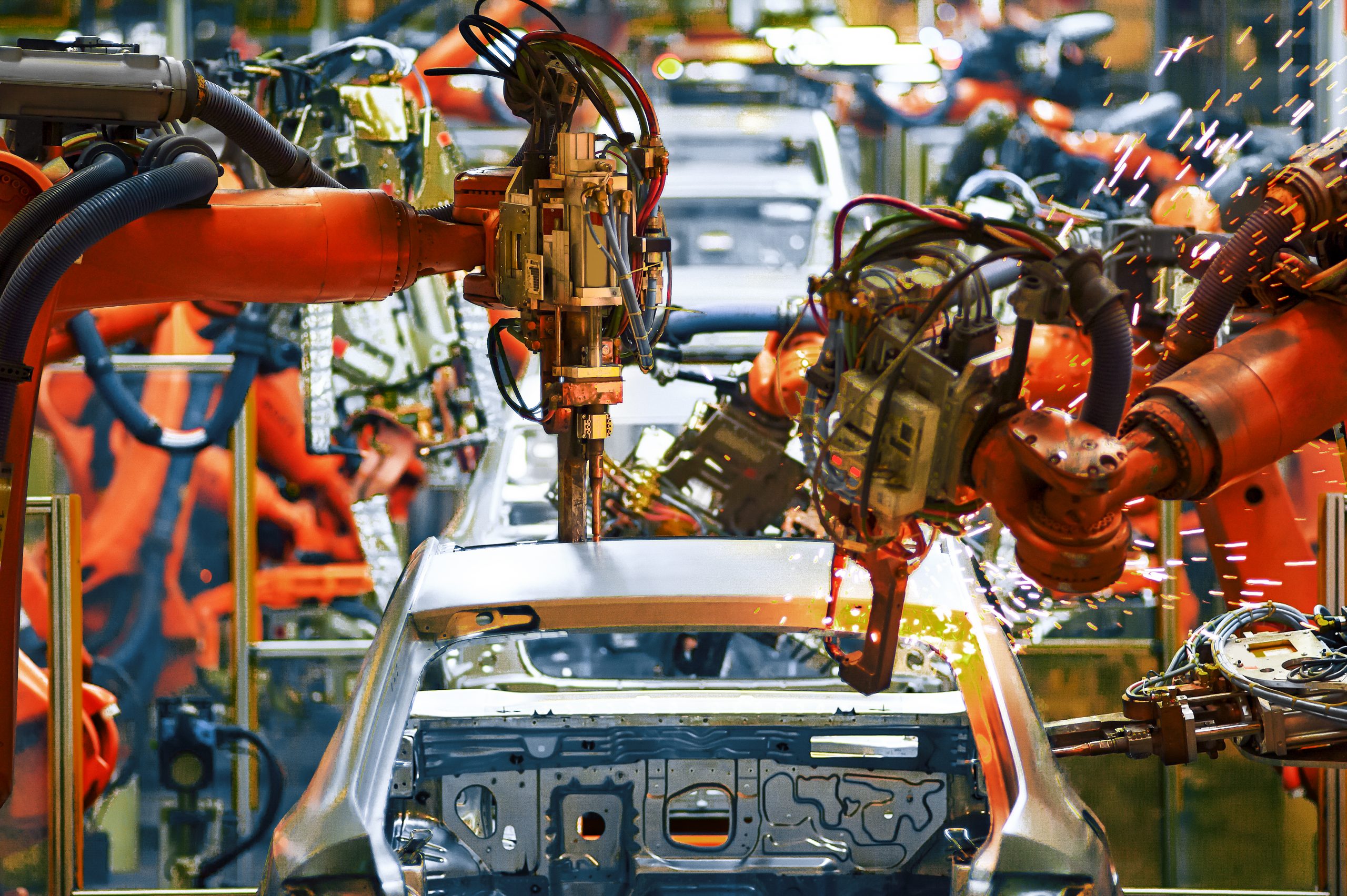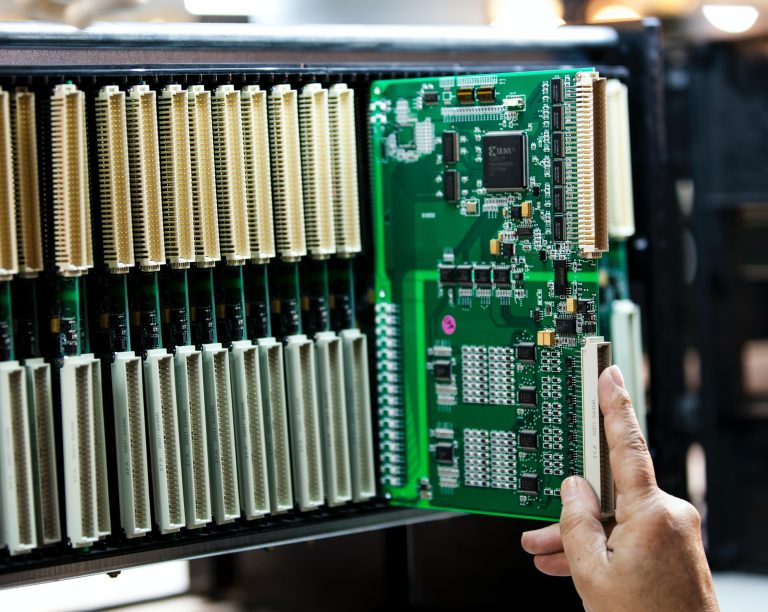Accelerating the Circular Economy Model in Automotive Electronics, Data Centres & Electronics Manufacturing
As the world continues to become more environmentally conscious, many companies and industries are looking for ways to reduce their carbon footprint and become more sustainable. One of the most effective ways to do this is by transitioning to a circular economy. This blog article will look at how the circular economy can be accelerated in automotive electronics, data centres, and Electronics manufacturing.

What is a Circular Economy?
A circular economy is an economic system that is based on the principles of sustainability. It works to eliminate waste and pollution by focusing on reusing and recycling materials.
In a circular economy, goods are designed to be reused, repaired or recycled. This reduces the amount of waste that is produced and helps to conserve natural resources.
The benefits of transitioning to a circular economy are numerous.
For one, it can help reduce the costs associated with waste disposal and resource extraction.
Additionally, a circular economy can help create jobs and stimulate the local economy. Finally, it can help reduce carbon emissions and promote a more sustainable way of doing business.
AUTOMOTIVE ELECTRONICS AND THE CIRCULAR ECONOMY

Automotive electronics are a critical part of the automotive industry. They are used to control the functions of a vehicle and enhance its safety and performance.
In a circular economy, automotive electronics can be reused, repaired or recycled.
Reusing and recycling automotive electronics can help reduce the costs associated with manufacturing/sourcing new parts and it also helps with safeguarding the supply chains by not having to source them from unknown suppliers.
In order to facilitate the reuse and recycling of automotive electronics, companies need to adopt innovative technologies and processes. This could include Retronix component recovery solutions that help with re-introducing safe components back into the manufacturing process.
Additionally, companies could also partner up with companies that provide automated testing systems to ensure that recycled parts meet the highest standards of quality.
DATA CENTRES AND THE CIRCULAR ECONOMY
Data centres are an important part of today’s digital economy. They are responsible for storing and processing large amounts of data.
New initiatives seek to combine data centre management with the core principles of the circular economy, such as disassembly and reuse.
By doing so, data centre operators can dramatically reduce their environmental footprint and carbon emissions, while also increasing operational efficiency.
Component recovery involves the reuse of components from decommissioned or retired servers and other hardware, as well as the responsible recycling of non-reusable parts.
This approach can help to reduce the total carbon footprint of data centres, as well as the overall cost of operations. It can help to reduce the amount of e-waste associated with data centre operations.

THE BENEFITS OF COMPONENT RECOVERY, REBALLING, RETINNING & TEST
Electronic component reballing, retinning, and recovery can bring many benefits in a circular economy. Reballing and retinning can help extend the lifespan of existing components, while component recovery can help minimize waste and reduce the need for new components.
Reballing is the process of replacing the solder balls on a component. The solder balls are melted and then replaced with new ones. This helps to extend the life of the component and reduce the need for new components. Retinning is the process of applying a fresh layer of solder to a component. This helps to improve the electrical connection between the components. Electronic component testing is an important process that can help to ensure the quality of components. This could include testing for moisture and temperature, as well as verifying the functionality of the components.
These practices can help to reduce the environmental impact of manufacturing and disposal, as well as help companies save money by salvaging usable components.
It can help to support the circular economy by maintaining the flow of resources, making products more sustainable and cost-effective for the long-term.
Retronix is an innovative company that specializes in remanufacturing, retooling, and testing electronic components. They are at the forefront of the circular economy and are committed to reducing waste. Retronix has developed a range of innovative technologies and processes that can help to extend the life of electronic components. This includes component recovery, reballing, and retinning.
CONCLUSION
The transition to a circular economy is essential for the sustainability of our planet. It can help reduce waste and pollution and conserve natural resources. It can also help create jobs and stimulate the local economy.
The circular economy can be accelerated in automotive electronics, data centres and electronics manufacturing by investing in innovative technologies and processes. This could include reballing, retinning, electronic component testing and electronic component recovery. By transitioning to a circular economy, companies can help reduce their environmental impact and create a more sustainable future.
CONTACT US FOR MORE INFORMATION
We’d love to stay connected and send you Retronix updates, research and invitations to our events.
© 2023 | Retronix Ltd, North Caldeen Rd, Coatbridge, Scotland, United Kingdom. ML5 4EF | Email: sales@retronix.com | Phone: +44 (0) 1236 433 345


